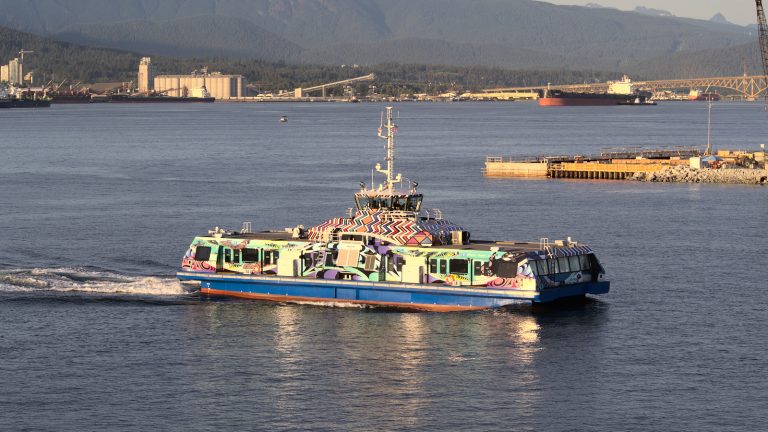Yesterday was the first day the Burrard Chinook (TransLink’s newest SeaBus) was put into revenue service.
The Chinook has a unique livery consisting of art from the Musqueam, Squamish, and Tsleil-Waututh First Nations communities and showcases the Chinook salmon within the ecosystem as well as First Nations cultures.
transit
My T-Comm site gets its 15 minutes of fame
Earlier today, a few local blogs mentioned my T-Comm website (a live map of all the buses in Metro Vancouver): This real-time Vancouver bus tracking map is pretty obsession-worthy (Vancouver Is Awesome) Vancouver bus tracking map allows you to track movement in real time (Vancouver Courier) This map will tell you where every public transit bus in Metro Vancouver is (Urbanized Vancouver/Daily Hive) The site wasn’t really designed for day-to-day navigation, but more for transit enthusiasts who are looking to find specific buses (e.g., the double decker test buses we have on the streets right now, 1008 and 1009). In Continue Reading
A new batch of New Flyer XDE60 articulated buses
This past Wednesday, TransLink started to put the newest batch of buses out onto the streets, in particular, Surrey streets. The transit enthusiast in me could not resist seeking out that new bus smell. These buses are the same model as the previous set of articulated buses back in 2013. However, this new batch has the “charcoal top” livery instead of the light grey which I think looks much better and fitting with the rest of the fleet. Like the last batch, these buses are fully air-conditioned. (Recently, TransLink announced that all future bus orders will have air conditioning standard.) These Continue Reading
Fun ways to get from Richmond to Downtown Vancouver on transit
I commute from Richmond to Downtown Vancouver every day for work. Normally I take the Canada Line, which is a quick and reliable way to and from work. As much as I like trains, some days it just seems boring; after all, the majority of the ride is underground. So I tasked myself to find five different ways to get to work (potentially one for each day of the week), if I wanted to take a break from the Canada Line. Let’s assume we’re commuting from Richmond Centre to Waterfront. Obviously we’re not optimizing for travel time. Option 1: 403, Continue Reading
The end is near for Whistler’s hydrogen fuel cell buses
In one week, Whistler’s fleet of hydrogen fuel cell buses will be parked as their five-year pilot project ends. Nova Bus diesel buses will be replacing them as of April 1st, 2014. The fleet of twenty buses is currently the largest fleet of hydrogen fuel cell buses operating in the world. The fuelling station for the fleet is also the world’s largest hydrogen filling station. The hydrogen fuel cell buses were brought to Whistler by a five-year demonstration project sponsored by the federal, provincial and municipal governments, and the Canadian Hydrogen and Fuel Cell Association. The buses arrived in late Continue Reading
